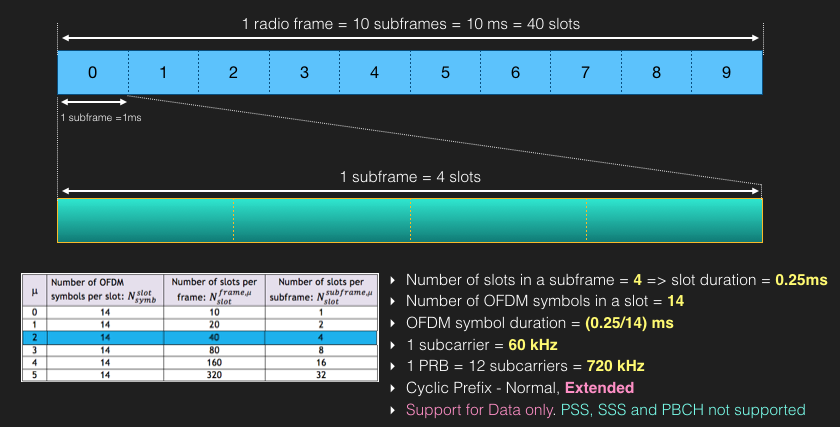Supported Transmission Numerologies
- A numerology is defined by sub-carrier spacing and
Cyclic-Prefix overhead.
- In LTE there is only one subcarrier spacing which is 15kHz where as in the case of 5G NR multiple subcarrier spacings are defined. Multiple subcarrier spacings can be derived by scaling
a basic subcarrier spacing by an integer N.
- The numerology used can be selected independently of
the frequency band although it is assumed not to use a very low subcarrier
spacing at very high carrier frequencies. Flexible
network and UE channel bandwidth is supported.
- The numerology is based on exponentially scalable
sub-carrier spacing deltaF = 2µ × 15 kHz with µ = {0,1,3,4} for PSS,
SSS and PBCH and µ = {0,1,2,3} for other channels.
- Normal CP is supported for all sub-carrier spacings,
Extended CP is supported for µ=2.
- 12 consecutive sub-carriers form a physical resource
block (PRB). Up to 275 PRBs are supported on a carrier.
- Resource
defined by one subcarrier and one symbol is called as resource element (RE).
- The
following table summarizes all supported numerologies in 3GPP Release 15.
Numerologies in detail:
Frame Structure
- Downlink and uplink transmissions are organized into
frames with 10ms duration, consisting of 10 subframes, 1ms each. Each frame is
divided into 2 equally-sized half-frames of 5 subframes each.
- Other
than the first OFDM symbol in every 0.5ms, all OFDM symbols within 0.5ms have
the same size.
Reference:
3GPP TS 38.211, TS 38.300, TR 38.802, TR 38.912






